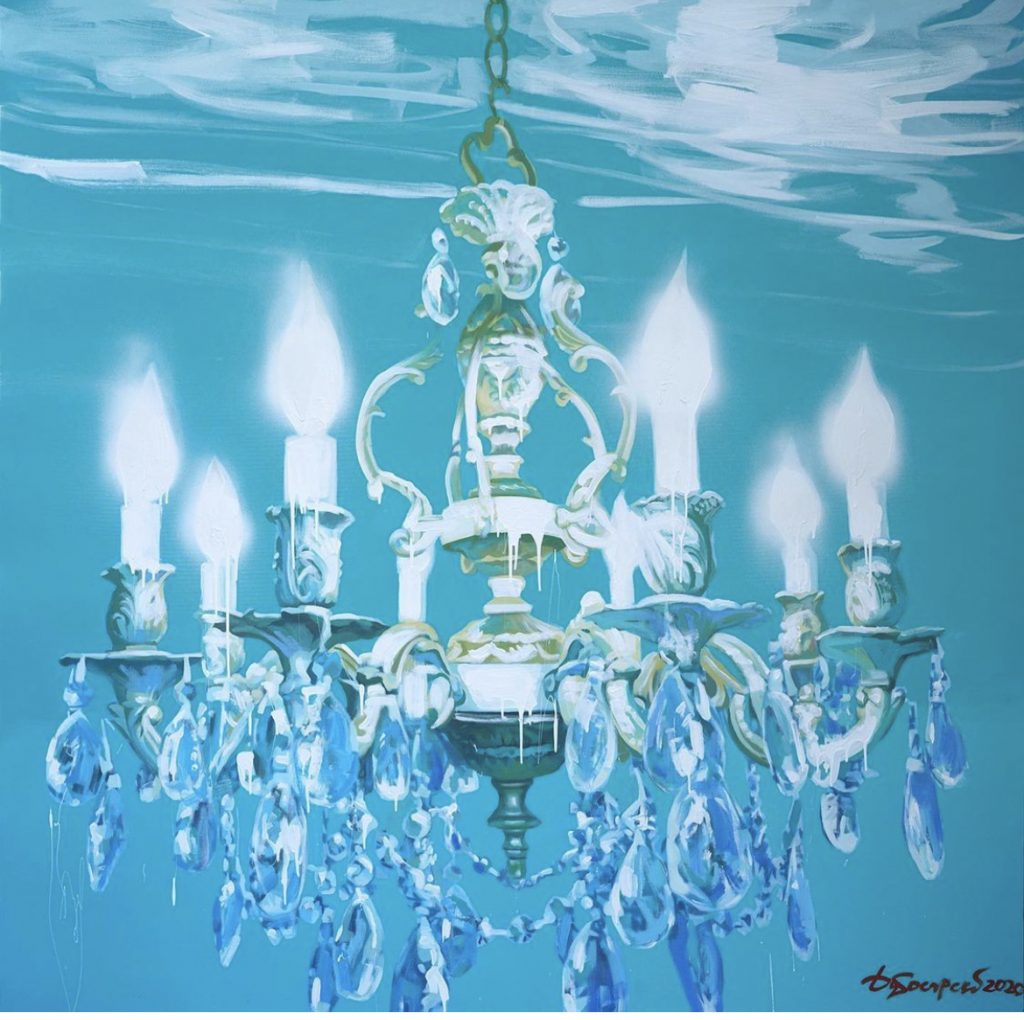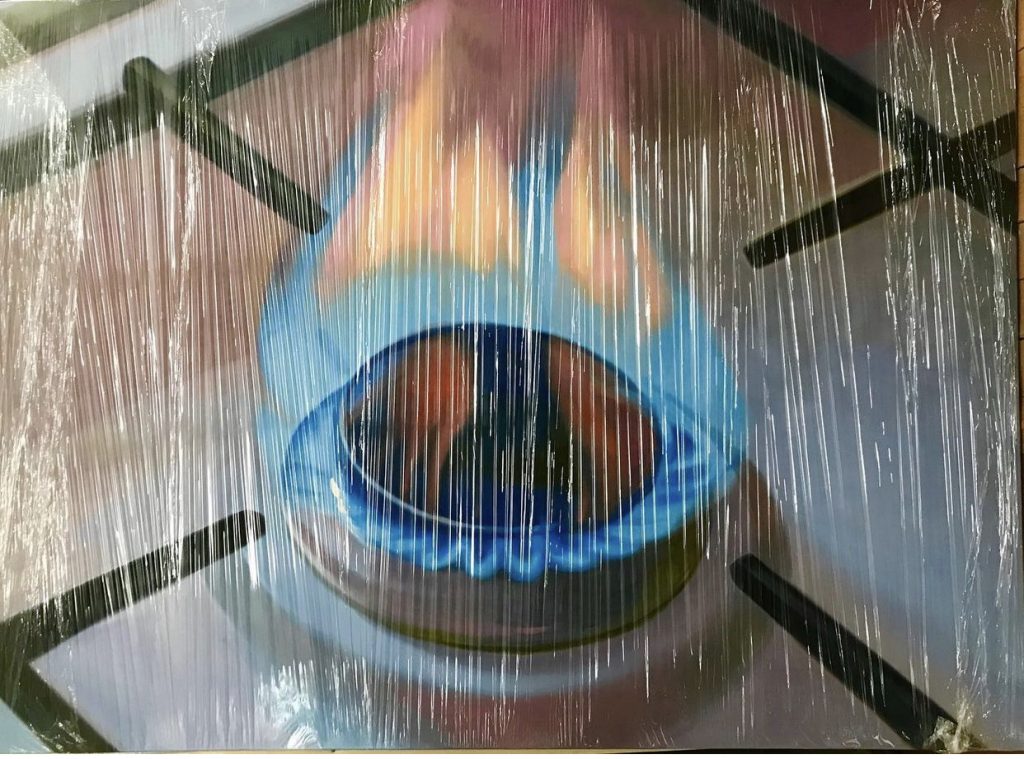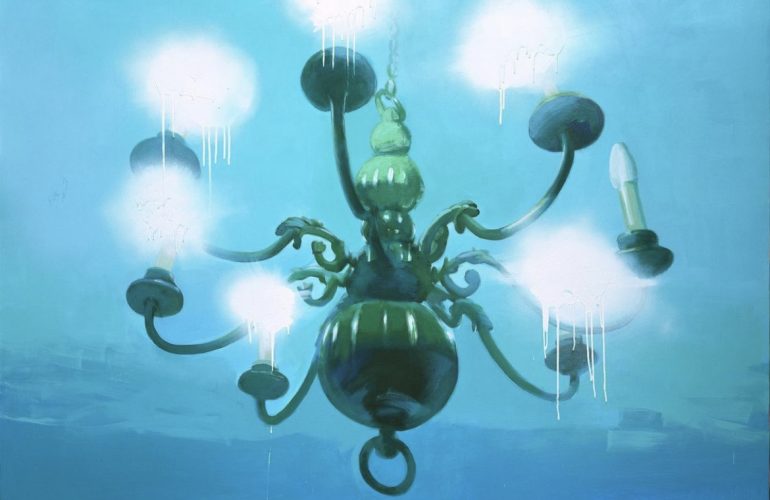Art is not life. Art is responsible for special zones and does not always directly answer questions, but art can take steps, break through space, and people may not understand that it was a breakthrough until humanity grows up to these standards.
On the precipice of 2022, artist Vladimir Dubossarsky shared his views with “Artdecision” about the current situation in contemporary art and about his recent art works:
Irina Vernichenko, Artdecision: You talk about art in dynamic categories.
Vladimir Dubossarsky: Art is a dynamic, lively zone, it is a zone where the reaction happens quickly, many exhibitions dedicated to Сovid have already been done.
I don’t draw Covid, and home stories, etc. How can you grasp the moment? Only by documentation. The role of the artist is not visible, it is not to be engaged in documentation of a moment, the artist deals with unique things, strange, incomprehensible.

IV: What is the difference between art and design?
VD: Art deals with problems and design deals with decoration. Art is a little ahead (although there are many mediocre artists and talented designers). Art uses new techniques and design is close to aesthetics. Design is more occupied with ideas of the human environment and the environment of a city. Once it was all one sphere, art was design, design was art: for example, icons, carving, and candlesticks in an ancient temple.Then art became “high”, though they intersect: art borrows from design, design uses the whole spectrum of art.
My paintings with chandeliers and cup holders are, in a sense, a “design” for the “Brezhnev project”. I see that it’s interesting to compare that time and now – so I’m doing a series about L.Brezhnev through the modern language of painting. This is not retro painting, but bright acrylic painting, “acid painting”, a “hallucination” as if you have a blurred picture on the screen.
Cup holders are utopia: nostalgia, on the one hand and emptiness on the other hand. These are paintings of a very large size with close attention to details and it is clear that I have a personal feeling – it is an image of a train that goes somewhere.

IV: H. Gadamer (“receptive criticism”) stated that classical art is the only way to communicate with the past. Do you agree?
VD: I am an artist who received a classical education, this is how I view the world, but a contemporary artist may be different. Reflections, the burden of knowledge gives a lot, but takes a lot away. Culture is good but I have my doubts about it.
Now comes the time of people who make “unburdened” art that has a different consumer, is distributed differently and spreads in a different way.
Previously, the artist was an exemplary professional. There was a caste of artists, they were few and needed to study and they lived their whole life with this status.
Now there are tools which allow art to be made quickly and easily, tools giving more people the opportunity to be artists. Every person with an Instagram is an artist. He creates his own exhibition online. He is simultaneously a photographer and a text author. He develops the concept, his resource’s strategy. Anyone, no matter how talentless he is.
For instance, the system of emojis has now become a mean of communication, emojis are completely patriarchal, pre-historic. Now a heart emoji ❤️can replace the phrase “I love you”.
The first art which we are aware of was the murals, paintings in caves, rock carvings, notches on stone in the form of some sculptures. Now we see again graffiti like cave art. Primitive emoji, graffiti are from where art began, and it no longer serves the culture.
IV: What is “real art”?
“Real art” is an arbitrary thing, we can look back and understand by looking back that “real art” is that which remains, it is filtered out by time. And when you are painting, you should definitely not bother to ask these kinds of questions.
IV: And what kind of questions should be asked?
VD: Simpler, clearer, more specific ones. When an artist creates he should not ask such global questions, they will simply consume him, he will not be able to paint.
IV: Do you explain to your students what questions the artist should ask?
VD: I bring them back to the Earth. They should ask the simplest questions possible. I believe that art should be intelligible, so that you understand what you are doing. The extent of admission of something that you do not control, should be minimal. For me it is important that they have the necessary tools. I do not teach them ideology. A person can only become an artist by himself. To explain how the art system works and the technologies of painting, yes, it is within my power.

IV: The “strategy of denial” (when a hero finds himself in an unbelievable situation or when there is tension between the hero and the environment) is a specific property inherent to works of art, according to the theorists of a “Reader response school”of crirticism. How do you understand this “strategy of denial”?
VD: Obviously, if we are going to look at the already classical paradigm of avant-garde art, then all avant-garde was built on denial. From the end of the19th century – start of the 20th until the postmodernism of the 80s, art was built on this principle. Up to a certain time it was like this. Yes, we all acted within the framework of these strategies, the 90s, I think these years represent the last period when we fundamentally acted within the confines of these strategies.
Everything must be considered in a temporary context. Now it seems to me, the paradigm is changing and quite quickly. Possibly, this will become an outdated statement and the Tik-Tok generation will not understand what this is about at all – a generation comes about without any inherent critical thinking: people enjoying life, why not?
All my strategies were within the confines of denial, now – not. I know artists who operate within the framework of this paradigm, but what happens in the zone of relevance lies in a different plane. For example, projects that have been named “the new sincerity”.
IV: And in your works?
VD: I am skeptical about been sincere in art. I believe that art should be interesting, talented. An artist’s position is simple: actions are important to the artist, he needs to move forward.
Is there a spark going through him? An artist may be an opportunist, albeit talented and time will flow through him. And another will sincerely express his small, private, boring unneeded problems.
Everything depends on the one artist, his aura, his charisma, his talent, his skills, in that which cannot always be put into words. A certain summation of these qualities which allow him to become an artist.
IV: Do you consult art collectors? Please tell us about your collection.
VD: My collection is a spontaneous collection, something was given to me, then exchanges, other. This is basically a collection of our time and of artists living in our time. It is not an attempt to picture the walls, this is part of my life.
IV: Have NFTs firmly fit into the fabric of the market or not?
VD: I’m interested in watching how it develops. We will try NFT. Sasha (Vinogradov) and I had our works on electronic carriers, for example computer sketches. Sketches for paintings are unique, the painting is in the museum, an electronic sketch has been made inside this system and can function in it.
For the young artists doing computer art, sales of NFT will be an advantage, before their works were considered memes, now they will be sold, why not?

